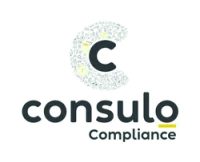THE JOURNEY from mere compliance with health and safety regulations to achieving carbon negative status is a bold vision for businesses committed to making a significant environmental impact writes Adam Fox, director at Consulo Compliance. This shift is not only about adhering to laws but also setting a new standard in corporate responsibility and sustainability.
As organisations worldwide strive to contribute to the global goal of reaching net zero emissions, the path to becoming carbon negative represents a proactive, innovative approach to environmental stewardship.
This article outlines a blueprint for businesses ready to embark on the journey, highlighting the integral role of health, safety, and training compliance in this ambitious endeavour.
…………………………………………..

Becoming carbon negative goes beyond achieving net zero carbon emissions; it involves actively removing more carbon from the atmosphere than is emitted.
This ambitious goal requires businesses to rethink their operations, supply chains, and products/services from the ground up, prioritising sustainability and environmental impact at every decision point.
At first glance, regulatory compliance and sustainability initiatives may seem like parallel tracks, with one focused on meeting current legal standards and the other on long-term environmental goals. However, these objectives are increasingly converging as regulations evolve to address the urgent need for climate action and businesses recognise the reputational, financial and ethical imperatives of going green.
Adopting a holistic approach to health, safety and environmental compliance not only ensures adherence to existing laws but also positions businesses as leaders in sustainability. This approach involves integrating environmental considerations into every aspect of health and safety protocols, from energy use and waste management to employee training and community engagement.
One of the most compelling arguments for sustainable compliance is its impact on business resilience. Companies that proactively integrate sustainability into their operations are better positioned to adapt to regulatory changes, market fluctuations such as the volatile fossil fuel market and environmental disasters. These businesses anticipate future challenges and opportunities, enabling them to pivot more swiftly and efficiently than their less-prepared competitors.
Furthermore, sustainable practices often lead to operational efficiencies such as reduced waste and energy consumption, which can significantly lower costs. These efficiencies, coupled with compliance to health and safety regulations, ensure a healthier workplace, leading to fewer accidents, reduced downtime, and enhanced productivity.
In today’s market, a company’s commitment to sustainability is a critical factor in its public image and brand reputation. Consumers are increasingly favouring brands that demonstrate a genuine commitment to environmental responsibility. By integrating sustainability into compliance and training efforts, businesses can showcase their dedication to not just being good corporate citizens but also leaders in the fight against climate change.
This commitment can lead to increased customer loyalty, as consumers are more likely to support and advocate for brands that align with their values. Furthermore, it can attract top talent who are eager to work for organisations that prioritise both employee well-being and environmental sustainability.
The Blueprint for Action
- Assess and audit Begin with a comprehensive assessment of your carbon footprint and environmental impact across all operations. This step lays the groundwork for targeted actions and benchmarks progress over time.
- Set ambitious goals Establish clear, measurable goals for reducing emissions and achieving carbon negativity. These objectives should be aligned with scientific recommendations and global standards, such as the Paris Agreement.
- Innovate and optimise Leverage technology and innovation to optimise operations for efficiency and reduced environmental impact. This can include adopting renewable energy sources, improving energy efficiency, and redesigning products and processes for sustainability.
- Engage and educate Foster a culture of sustainability within the organisation through comprehensive training programmes. Ensure that employees at all levels understand their role in achieving carbon negative status and are equipped with the knowledge and tools to contribute effectively.
- Extend beyond the organisation Look beyond the company’s direct operations to engage suppliers, customers, and the wider community in sustainability efforts. This collaborative approach amplifies impact and drives broader systemic change.
- Monitor, report and adjust Implement robust monitoring and reporting mechanisms to track progress against goals. Regularly review and adjust strategies in response to new information, technologies, and regulatory changes to stay on the cutting edge of sustainability practice.
Transitioning from compliance to carbon negative is a bold but necessary step for businesses committed to playing a pivotal role in combating climate change. This journey requires a reimagining of traditional business practices, with a deep integration of health, safety, and training compliance into sustainability efforts.
By following this blueprint, businesses can not only reduce their environmental footprint but also lead the way towards a healthier, more sustainable planet for future generations.




